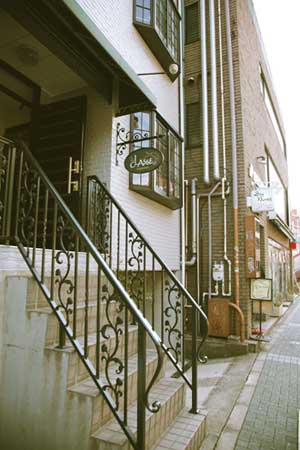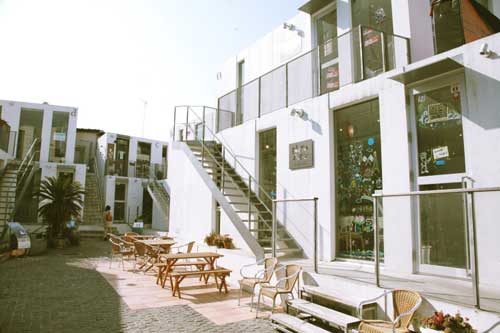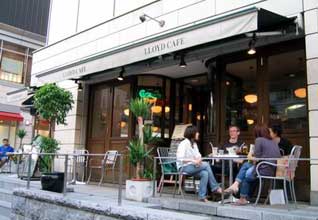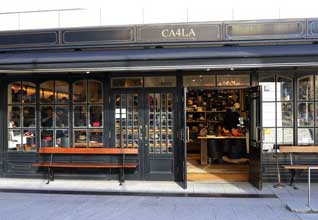
Travel Guide
Introduction
 Known as a hot spot of shopping for locals, Daikanyama is home to a wide variety of fashionable boutique shops and sidewalk restaurants and cafes. Multiple courtyards are located between restaurants and homes and the low rise buildings give the neighborhood a more subdued classic style than the hyper-modern high rises of Tokyo’s other shopping districts. The Daikanyama district is a quiet counterpoint to the Shibuya station area's noise and brash consumerism.
Known as a hot spot of shopping for locals, Daikanyama is home to a wide variety of fashionable boutique shops and sidewalk restaurants and cafes. Multiple courtyards are located between restaurants and homes and the low rise buildings give the neighborhood a more subdued classic style than the hyper-modern high rises of Tokyo’s other shopping districts. The Daikanyama district is a quiet counterpoint to the Shibuya station area's noise and brash consumerism.
Dotted with embassies and homes of foreigners, the area has the atmosphere of a foreign country. The town has three major streets starting from Daikanyama Station: Hachiman-dori street which leads towards Shibuya, Kyu Yamate-dori street which leads towards Komaba, and Komazawa-dori street which leads towards Ebisu. Among these streets you can find Hillside Terrace, the symbol of Daikanyama, and tasteful and unique shops and restaurants where visitors can enjoy shopping and dining. In addition, the wide avenues of this area in the midst of the city are lined with big trees and greenery, and are most suited to strolling.
Main attractions
Daikanyama Address
Daikanyama Address is the area's biggest shopping complex. It is accessible from the West Exit of Daikanyama Station
Daikanyama Address is distinguished by a large green flower sculpture on Hachiman-dori Avenue, but any originality about the place stops there. Daikanyama Address is big but, like its name, uninspiring. You are much better off exploring the pedestrian-only part of Daikanyama right in front of the station, and Hillside Terrace a little further west.
Sarugakucho
The area just west of Daikanyama Station and Hachiman-dori Avenue is not Daikanyama proper, but Sarugakucho, which goes down as far as Kyu-Yamate-dori Avenue. From the traffic-lighted intersection "Daikanyama-koban-mae," go along Kyu-Yamate-dori Avenue into a world of elegance and good taste, which makes the rest of Daikanyama suddenly seem rather adolescent and precious.
Hillside Terrace
Hillside Terrace is a laidback art, shopping, dining, cafe complex built on both sides of the street.
Hillside Terrace features much the same kind of shops as in Daikanyama proper: restaurants, cafes, boutiques, hairdressers, art spaces - plus a design library - with a decent English collection (membership required) - but on a larger, cleaner, and more sophisticated scale.

History
After the Great Kanto Earthquake of 1924, one of the many public housing building projects undertaken by the Ministry of Home Affairs was the 232 apartment unit Daikanyama apartments. The building was the focal point for all future architectural developments in the neighborhood, built with the use of earthquake proof concrete designs. The apartment complex was destroyed in 1996 during restructuring of the neighborhood.
In 1967, Fumihiko Maki was commissioned to develop the area that is known as Hillside Terrace, a development that now takes up much of the upperside of the station. Lining both sides of Kyuyamate-dori, Hillside Terrace utilizes multiple sleek and variety laden forms of architecture and consists of museums, stores, restaurants and even the Danish embassy.


Travel Advice
“Transses” is the local community but between Shibuya and Daikanyama. The fee is 150 yen for adult and 80 yen for child. Operation time is between 8am to 8pm. Please see Tokyu Transses Japanese official site for detail.
Visit
| Address | Shibuya-ku, Tokyo | |
| Phone | ||
| Admission | Free | |
| Hours | Free time | |
| Closed | Open 7 Days a Week | |
| Duration | 1 hour | |
| Getting There | By Train 1 minute walk from Daikanyama Station on Tokyu-toyoko Line. |
|
| Parking | No parking available | |

